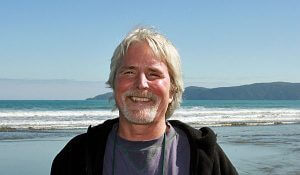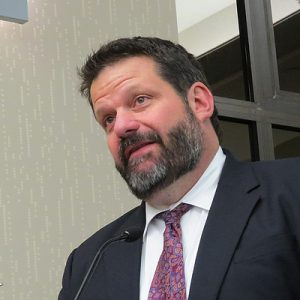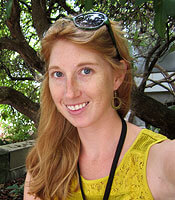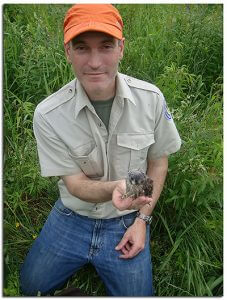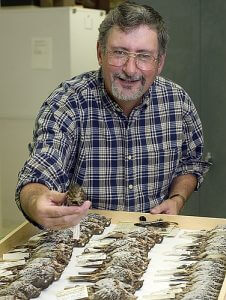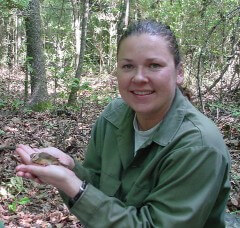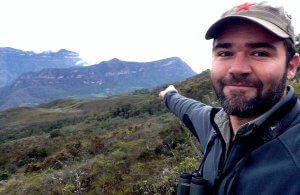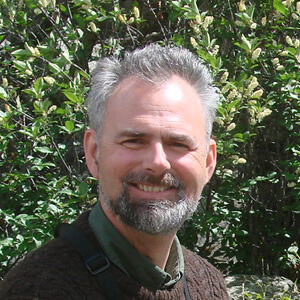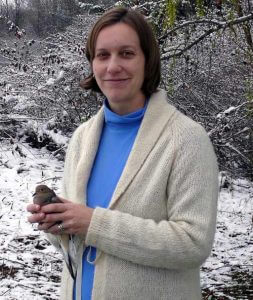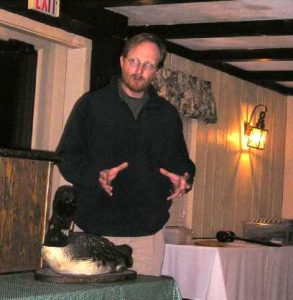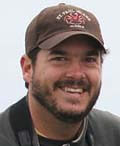Upcoming Programs
We are pleased to announce that Nuttall monthly meetings are back in person at Harvard.
Past Programs
(NOC members, login to view and listen to presentations)
David Wiley / Kevin Powers – Preliminary Results of Great Shearwater Habitat Use in and around Stellwagen Bank National Marine Sanctuary
Dr. David Wiley and Kevin Powers will discuss their research on Great Shearwaters. For the past three years the Stellwagen Bank National Marine Sanctuary’s science team and collaborators have placed satellite tags on Great Shearwaters to investigate patterns of habitat use, long range movements and bycatch in commercial fisheries. The team is also investigating food…
Read MoreRoni Martinez – Neotropical Raptor Research & Conservation
Roni Martinez was born in Belize and has always been submersed in nature. He worked as a natural history guide at Blancaneaux Lodge in Belize from 2004 until mid-2014. In 2009, he became Blancaneaux’s first Conservation Officer, the first such position in Belize. In this position, he worked along with many different researchers and conservation…
Read MoreKim Peters – How Airfields in the Northeast Can Provide Benefits to Grassland Birds, Maintain Aircraft Safety and Support Broad-scale Conservation for Declining Species
Species associated with grasslands and other open spaces represent one of the most imperiled and rapidly declining groups of birds in North America. The Northeastern U.S. is increasingly being recognized as an important source of breeding habitat. For grasshopper sparrows, upland sandpipers, and eastern meadowlarks, airfields provide the some of the largest breeding sites in…
Read MoreJeff Gordon – How Birding Can Save Your Life and Maybe, Just Maybe, Save the World
Alvaro Jaramillo has said that if golf is a good walk spoiled, then birding is a good walk perfected. It’s such a simple, compelling, positive message. But that positivity is something that birders as a community have relatively rarely managed to convey. Why is it that with as great a “product” to sell as the…
Read MoreShiloh Schulte – Arctic Shorebirds of Coats Island, Canada
Each year tiny Semipalmated Sandpipers and their larger relatives make a tremendously difficult trip from their South American wintering grounds to their breeding territories in the Arctic. In recent years the eastern population of Semipalmated Sandpipers has declined sharply and Manomet scientists set out to discover why. Traveling to a remote field camp on Coats…
Read MoreJennifer Mortensen – The White-Breasted Thrasher: An Endangered, Cooperative Breeder
The White-breasted Thrasher, described as a “very rare bird” by James Bond in 1928, continues to be rare today. We have been studying White-breasted Thrasher demography and cooperative behavior at the stronghold of its Saint Lucian distribution, the site of recent, significant habitat loss. Here I will present on the species’ natural history, our ongoing…
Read MoreAndrew Vitz – Why are Songbirds so Hard to Locate in Midsummer: An Examination of the Post-fledging Period
Andrew Vitz, who is from Cincinnati, Ohio, earned a BS from the University of Wisconsin and his MS and PhD from Ohio State University, studying the post-fledging ecology of forest songbirds. Dr Vitz worked four years as an avian ecologist for the Carnegie Museum of Natural History in Pennsylvania before being appointed Massachusetts State Ornithologist…
Read MoreRobert M. Zink – Sisyphean Evolution in Darwin’s Finches
Robert M. Zink, leading scholar in avian evolution, holds the Breckenridge Chair in Ornithology and has served as Curator of Birds at the Bell Museum of Natural History and as Professor of Ecology, Evolution, and Behavior at the University of Minnesota. Dr Zink earned his BS at University of Minnesota, Minneapolis, in 1977 and his…
Read MoreMia Revels – Natural History of the Swainson’s Warbler
Dr. Mia Revels, an associate professor of biology at Northeastern State University in Tahlequah, Oklahoma, has risen to the challenge of assessing the status of Swainson’s Warbler in Oklahoma. Revels’ was an undergraduate at Northeastern State and received her degree in natural sciences and science education. She then earned a Master of Science in natural…
Read MoreRobert McCracken Peck – Audubon in the West
Robert McCracken Peck, Senior Fellow of the Academy of Natural Sciences of Philadelphia, is a writer, naturalist and historian who has traveled extensively in North and South America, Africa, Asia and Europe. He served as Special Assistant to the Academy’s President and Director of the Academy’s Natural History Museum before being named Fellow of the…
Read MoreDiego Calderón-Franco – Colombia: A Plethora of Birds New to Science
Diego Calderón-Franco was born in Medellín, Colombia and studied biology at the Universidad de Antioquia. He has been involved in exploring poorly-known, remote areas in the Neotropics with an emphasis on Colombia. He has been active in central Andes exploration and bird survey work, several audio recording projects, and research on manakin display behavior in…
Read MoreGerrit Vyn – Chasing a Unicorn: Expeditions to Capture the First Comprehensive Media of the Spoon-billed Sandpiper
Also see: supplementary video Gerrit Vyn is a Seattle-based photographer deeply committed to conservation and connecting people more intimately with the myriad creatures sharing this miraculous and fragile planet. His work often focuses on birds because they are powerful and visible indicators of environmental health and change. Gerrit’s images have been used by most major…
Read MoreCarol R. Foss, PhD – The Rusty Blackbird: Elusive Denizen of Northern Wetlands
Carol Foss, Director of Conservation at Audubon Society of New Hampshire, holds a B.A. in Biology from Colby College, a M.S. in Zoology from the University of Connecticut, and a Ph.D. in Wildlife Ecology from the University of Maine. Carol has served NH Audubon in a variety of capacities for more than 30 years, beginning…
Read MoreFletcher Smith – Satellite Tracking and Full Life-cycle Ecology of the Whimbrel
Fletcher Smith, research biologist at The Center for Conservation Biology, William and Mary College , Virginia, works with a diversity of bird species throughout the western hemisphere, following migrants from their breeding to winter grounds. His current research projects include work with Whimbrels, Red Knots, marsh sparrows and neotropical migrants. In addition, he conducts breeding…
Read MoreRick Wright – Biodiversity: A Good Thing, Apparently
A Nebraskan by birth, Rick Wright attended University of Nebraska in the late 1970s. While in college he served as assistant to Paul A. Johnsgard; Rick was given the job of reorganizing the bird skin collection at the university museum. In 1983 Rick enrolled at Harvard Law School briefly, and then embarked on a graduate…
Read MoreMarja Bakermans – Breeding Bird Response to Forest Management: Developing Guidelines for Two Imperiled Species
Marja H. Bakermans B.S. Biology: Bucknell University M.S. Natural Resources: The Ohio State University Ph. D. Natural Resources: The Ohio State University Currently: Assitant Biology Professor, Worcester Polytechnic Institute Marja writes: I possess a strong commitment to student education, and a goal of mine is to stimulate students’ critical thinking and problem solving abilities. I…
Read MoreGeorge L. Hunt – Marine Ornithology: Some Thoughts on the Development of a Young Discipline
George L. Hunt Education: 1965 Harvard College. AB, Biology 1965-1966 University of Pennsylvania. 1971 Harvard University. Ph.D., Biology Employment: 1970-1976 University of California, Irvine: Assistant Professor 1976-1982 University of California, Irvine: Associate Professor 1979-1983 University of California, Irvine: Chair, Department of Ecology and Evolutionary Biology 1982-2005 University of California, Irvine: Professor 2005- University of Washington,…
Read MoreHarry Vogel – The State of the Loon
Harry Vogel received his BES degree in environment and resource studies and biology from the University of Waterloo, ON, in 1990 and his MSc degree in zoology from University of Guelph, ON, in 1995. In his professional career he has been Project Biologist and Coordinator for Canadian Lakes Loon Survey for Bird Studies, Canada; Trustee,…
Read MoreGeorge L. Armistead – pOrnithology: The Birds…and the Birds and the Bees
George Armistead, who has been birding for nearly thirty years, hails from Philadelphia, where he lives with his wife, Laura, in center city. He attended the University of Pennsylvania and completed both a B.A. and an M.A. in environmental studies. He worked for seven years in the ornithology department of the Academy of Natural Sciences…
Read MoreCagan Sekercioglu – Conserving Birds Around the World: From Species to Landscapes and People.
Cagan Sekercioglu B.A. 1997, Anthropology, Harvard University B.A. 1997, Biology, Harvard University. Project: The effects of logging-based habitat modification on the vegetation structure and forest bird communities of the Kibale Forest National Park, Uganda Ph.D. 2003, Department of Biology – Ecology, Stanford University Center for Conservation Biology. Project: Causes and Consequences of Bird Extinctions Associate…
Read More


